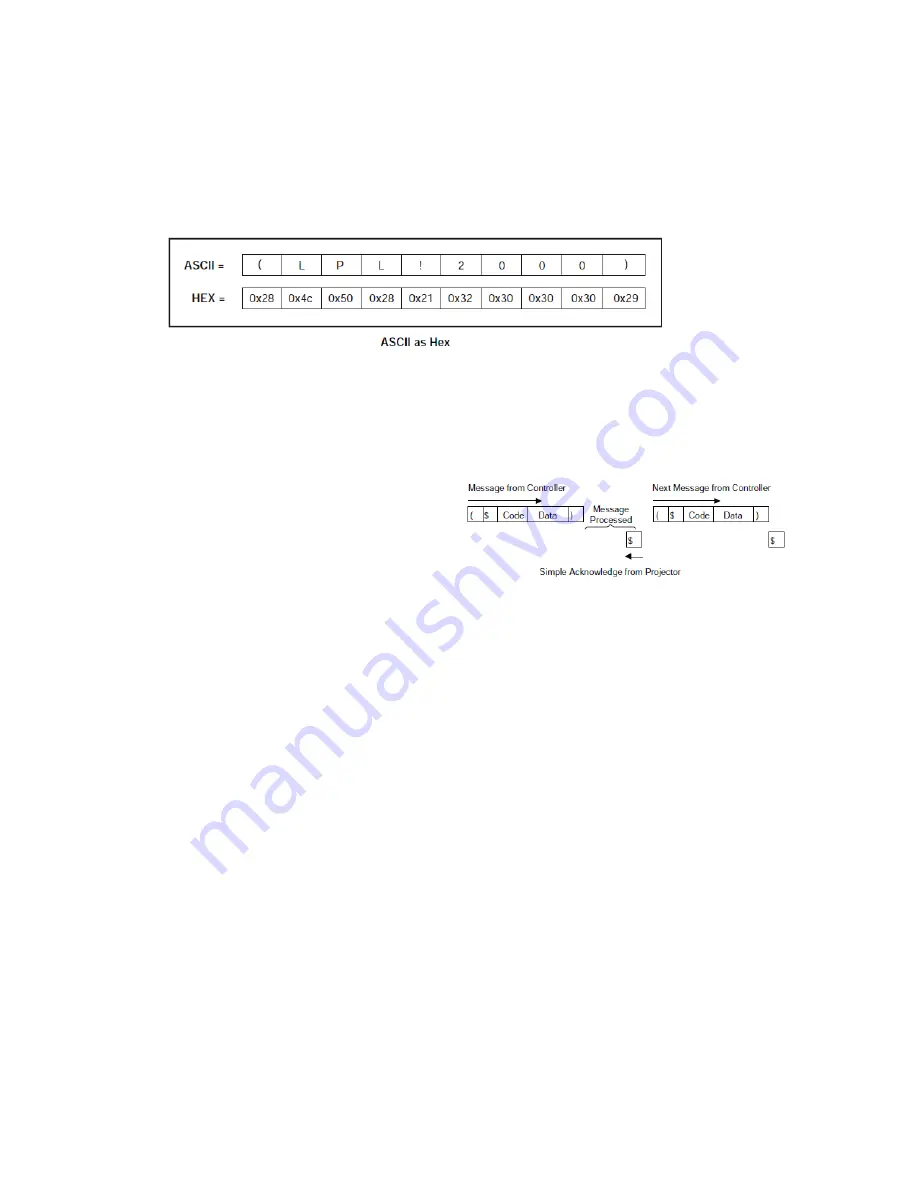
101
What is Actually Sent in a Message
Although you will send and read messages as strings of ASCII characters, the actual message travels as a sequence
of bytes. Each character in this sequence requires 1 byte. See example below, which illustrates a “lamp limit is
2000 hours” reply from the projector.
Maximizing Message Integrity
For additional reassurance and/or maximum message integrity, you can insert one or two special characters:
ACKNOWLEDGMENTS:
If you want assurance from the
projector (or group of projectors) that a set message
has been processed, request this simple
acknowledgment by inserting a “$” just after the start
code “(“. When the projector executes the required
action (such as a source switch, for example), the
projector will send a “$” (only) back. This is a quick way to confirm success with set messages, and is particularly
useful with long‐distance communication links or where the projectors and/or images are not visible from the
controller. Acknowledgements can also be a type of flow control. Note that requesting an acknowledgement
serves no purpose when included in a request message, since the acknowledgement will be redundant to the
actual reply from the projector. However, if requested, the “$” acknowledgement from the projector will follow
the reply.
CHECKSUMS:
For maximum message integrity, add a checksum character “&” just after the “(“ as shown below.
You must then also include the correct checksum total (0‐255) just before the “)” end code. Make sure to add a
space before the calculated checksum to separate it from the last data parameter:
(&con64 240)
The checksum is the low byte of the sum of the ASCII values of all characters between the “(“ and the beginning of
the checksum. Calculate the checksum for the above “set contrast to 64” command as follows:
CHECKSUM EXAMPLE
= & + c + o + n + 6 + 4 + ‘space’
= 26h+63h +6Fh +6Eh +36h +$34h +$20h
= 01F0h
= F0h when only the low byte is used
= 240
Summary of Contents for REF-1000
Page 1: ...1 REF 700 REF 1000 HOME THEATER PROJECTORS OWNER S MANUAL ...
Page 27: ...27 FIGURE 3 1 REMOTE KEYPAD Wired Remote ...
Page 94: ...94 Appendix B Menu Tree ...
Page 95: ...95 ...
Page 96: ...96 ...
Page 100: ...100 Sampling Messages and Their Meaning ...
Page 115: ...115 ...















































